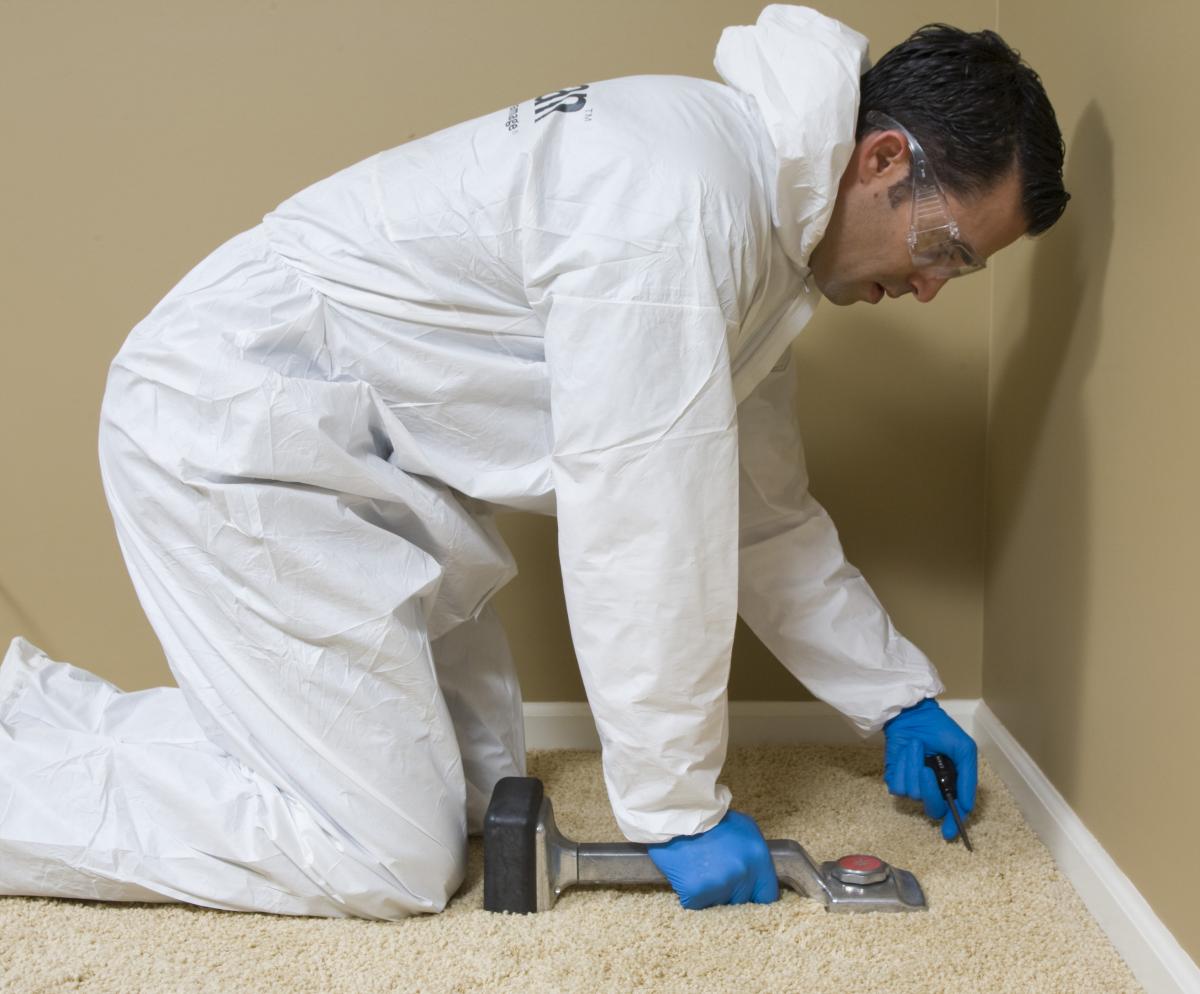Professional Instruments are Key to Proper Drying
There should be no guesswork when handling water loss in a structure. There are many steps necessary to properly inspect, measure, and track the drying process to insure the restoration is complete. Using the proper instruments is your best assurance of the highest quality results.
When first entering an area affected by moisture damage, our professional restoration company employs both trained and experienced visual observation and professional measuring instruments to determine the extent of the migration of water. Time is critical. The longer water remains in contact with building materials such as carpet, wood, drywall, and insulation, the farther it spreads and the more it is absorbed into those materials.
Horizontal migration generally affects areas relating to structural flooring including carpet and pad, and hardwood floors. The amount of moisture that may have migrated through carpet and into the padding below is often not readily apparent through visual inspection only. Padding has sponge-like properties that make it more absorbent than carpet and allows water to spread farther than it does on the surface of the carpeting.
A moisture sensor (especially designed for detecting moisture in and under carpet) has metal probes that penetrate through carpet and into padding. The moisture sensor detects the presence of moisture (indicated by an LED and/or an audible tone). It does not, however, measure the quantity or how much water is present.
Once horizontal migration has been determined, the next step is to find and map vertical migration. Most structural building components are hygroscopic – meaning they absorb water at different rates and in varying amounts. The density of a specific material determines its rate of porosity.
For example gypsum drywall is much more porous than the wood commonly used for structural lumber such as 2×4 or 2×6 framing materials. And insulation (within wall cavities) is more porous than gypsum drywall.
A non-penetrating meter can be used to discover vertical migration of water. This device uses the principal of capacitance. When the sensor is placed against a flat surface, pads on the back of the instrument detect moisture to a depth of approximately 5/8 of an inch. Placed against wood, it reflects the content of water as an approximate percentage. When used on other materials, it reflects a reference number for moisture contained in that material, and that reference number allows it to be compared to similar materials that were not affected by water damage.
When more detailed analysis is needed, a penetrating moisture meter is used. This tool is calibrated primarily for wood, but can be used on other materials as well. With various attachments it can measure moisture levels in gypsum drywall, wall paneling, baseboard, interior cavity insulation, hardwood flooring, concrete, etc. The penetrating meter will cause minor damage when used, but those are easily repaired and proper training will assure the best way to use it to minimize its effects.
A thermo-hygrometer measures the temperature and relative humidity present in any given environment. Our professionals can then take that data and determine the specific humidity, the actual amount of moisture in the air. When evaluating a drying system, our professionals use the specific humidity to determine its effectiveness in drying the air, and dry air is needed to achieve dry structure and contents. Tracking and recording the data from the thermo-hygrometer allows the restorer to modify the drying system and take the necessary steps to reduce the levels of moisture in the environment.
Our professionals use the proper metering instruments and equipment and determine the difference between the measured moisture level and the dry or normal state of building materials. Our professional restorers have a thorough understanding of the normal moisture levels of most common building components. Based on the difference between the measured moisture levels and the normal states, our professionals determine the appropriate drying times for each material. Areas of the structure that were not affected by the water damage are also checked to establish the dry standard if possible.
Consistent inspection and mapping of the affected area will determine the extent of the water migration (and evaporation) both horizontally and vertically. Temperature and relative humidity measurement readings are recorded, both inside and outside the structure. This monitoring is performed every 24 hours, at a minimum. During the drying process, monitoring of both atmospheric and structural moisture levels shows the daily drying process until it is complete.
Our trained, restoration professionals at PuroClean Certified Restoration use the appropriate instruments and meters to help insure that our water removal techniques are drying the structure and contents as rapidly and efficiently as possible.


